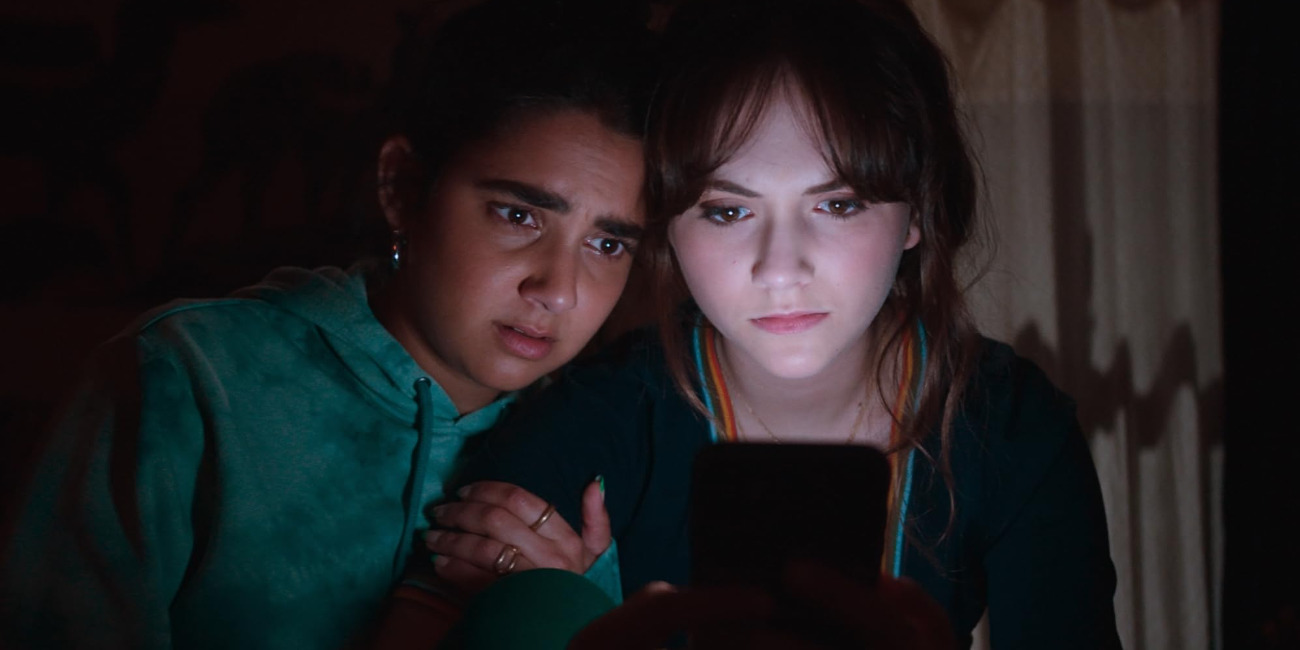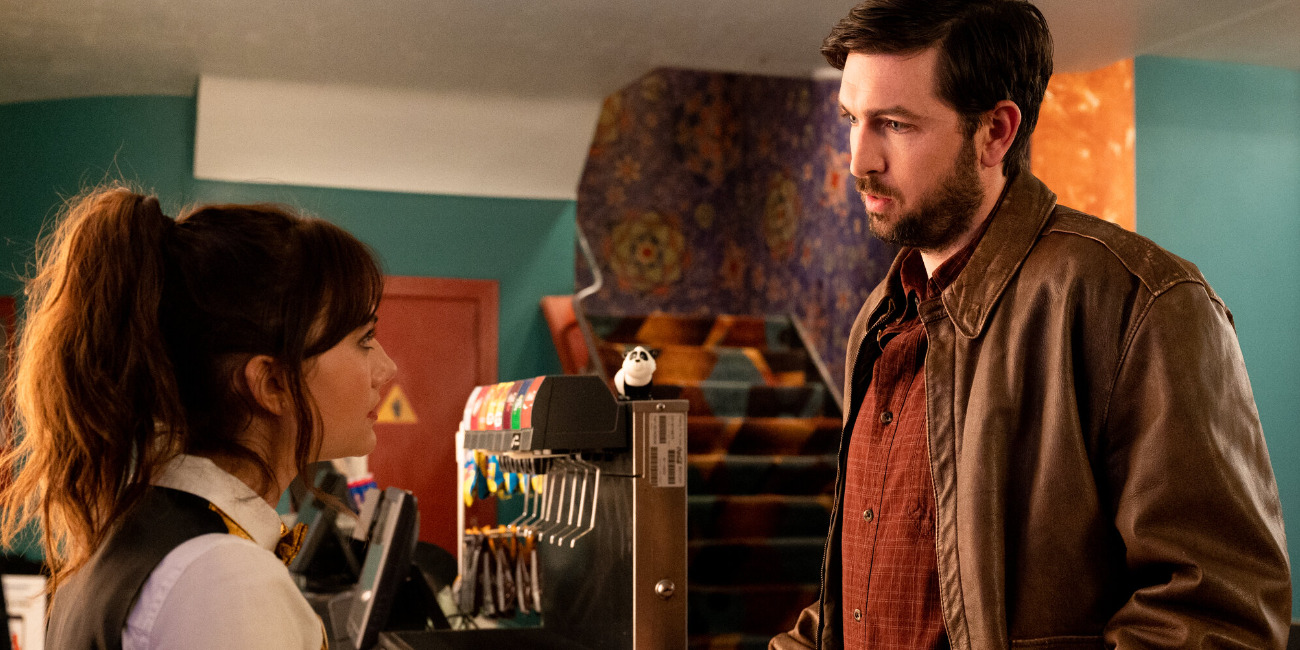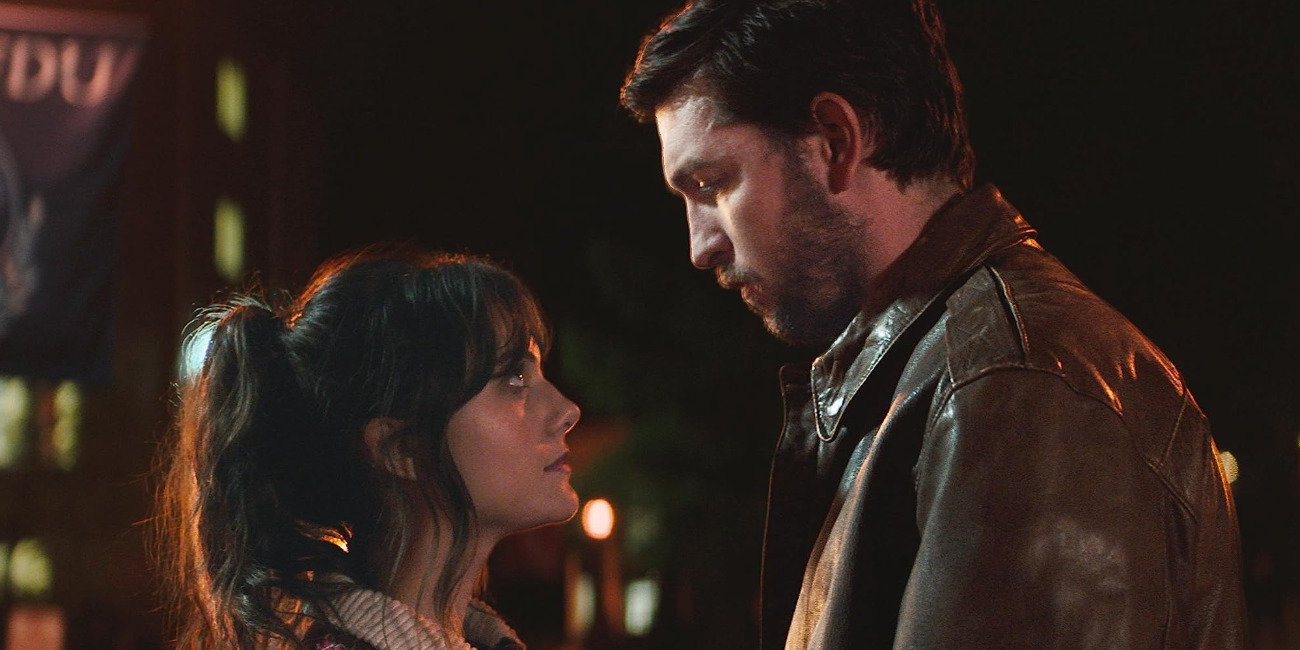‘Cat Person,’ a film that pitches a probable rom-com premise and turns it into a horror thriller, aims for a realistic depiction of the precarious side of the dating world. The story follows Margot, a college sophomore who works part-time at a theater. Naturally, she has a chance encounter with an older man, Robert, that turns into a flirtatious back-and-forth over text messages. However, once the virtual relationship begins bleeding into real life, Margot questions her life choices over bad dates and worse sex. As the realization sinks in that Robert is a much different man than the one Margot created in her head, the woman finds her anxieties coming to life, compelling her to wonder whether or not she’s inadvertently fallen into the trap of a serial killer.
Through comedic devices, uncomfortable moments of authenticity, and tense situations, Margot’s story as a young woman may strike a chord with the audience. Whether in terms of relatability through reflection or recognition, the film is bound to parallel reality for the viewers. Thus, the question emerges: how much reality is behind the film?
Kristen Roupenian’s Short Story and Its Roots in a True Story
‘Cat Person’ is partially based on a true story. At first glance, the film’s origins seem simple enough as an on-screen adaptation of an eponymous viral New Yorker fiction short story by Kristen Roupenian. The story came out in 2017, around the same time when social media was championing the #MeToo movement. With discussions of unfair power dynamics already dominating the culture, Roupenian’s ‘Cat Person’ arrived as a great tool to ignite conversations around the same topic.

The story helms a relationship between a 20-year-old woman and a 34-year-old man, with the former’s introspective narrative taking center stage. As such, the subject matter delves into the nuances of a pre-existing power imbalance between relationships that appear heterosexual or possess an age gap. During early conversations about her story, Roupenian cited her own dating experiences as the subliminal inspiration for her work.
However, given the universal nature of some of these experiences, Roupenian’s final product, Margot’s character, and her storyline ended up resonating deeply with several readers. “Everything would’ve been different for me when I was at the age of Margot if I’d understood how collective some of these experiences are,” said the writer in a conversation with The Guardian in 2019.
Still, even though Roupenian maintained the fictionality of her work, a Slate article by Alexis Nowicki, published in 2021, claimed that the author lifted the biographical aspect of Margot’s story from the latter’s life. After paralleling Margot’s characteristics, such as origin from a small town, dating history in college, and employment at a theater, Nowicki also related Robert to her own unnamed ex. “It was a vivid description of Charles [pseudonym for Nowicki’s ex]. But that felt impossible. Could it be a wild coincidence? Or did Roupenian, a person I’d never met, somehow know about me?” the woman said in her article.
Eventually, the Slate article came to the conclusion that Roupenian came across Charles while living in Ann Arbor and used the story of him dating a much younger woman as a “jumping-off point” for her story. “In retrospect, I was wrong not to go back and remove those biographical details, especially the name of the [Margot and Nowicki’s shared] town. Not doing so was careless,” the article detailed, citing a note Nowicki claimed to have received from Roupenian.
Nevertheless, even in the note, Roupenian emphasized that apart from a few details, Margot’s story remains fictitious— mostly drawing inspiration from the author’s personal experiences. In the end, Nowicki acknowledged the nuance of the situation while still pointing out the complications presented by Roupenian’s story’s alleged basis in her life. Either way, the story continued to have personal roots in reality, blanketed with a transparent blanket of fictionality.
The story saw a positive response, with numerous women relating to Margot’s experiences. The tale’s exploration of realistic themes through the unbridled lens of authentic, anxious, and messy internal commentary offered a reflection of real life that many appreciated. “In terms of what I’m interested in, I write a character from a place of disconcerted surprise at their own behavior – of people who can’t quite navigate where they are,” expanded Roupenian. “Those feelings of I don’t understand how I got here, or I came here with good intentions, and now I’m causing harm – they cross gender boundaries, and probably all boundaries.”
Inversely, the short story ‘Cat Person’ also garnered quite a lot of negative reactions— mostly at the hands of male readers who felt misinterpreted or misrepresented by the story. Ultimately, those criticisms only furthered the societal conversations that the story incites, adding to its realistic impact.
Susanna Fogel’s Interpretation of the Short Story
For the most part, Fogel’s ‘Cat Person’ remains incredibly faithful to its source material, re-creating numerous scenes while building additional narratives. Screenwriter Michelle Ashford adapted Roupenian’s story into a script, after which Fogel entered the project. The Director was already familiar with the story, having encountered it in the past, and remained fascinated by the tale.

Perhaps for the same reason, Fogel wanted to ensure that the film remained true to Roupenian’s original work. “I reached out to Kristen [Roupenian] when we were casting. Michelle [Ashford] had written the script before I came on, and it was important to me to connect with her because I wanted to make sure that we were making a movie that would make people feel the way the story did,” she said in an interview with Harpers Bazaar.
Thus, the film parallels the short story’s realistic beats authentically and brings Margot’s realistic experiences to the screen with a stark sense of realism. However, one major aspect wherein the film departs from its originator comes with the story’s conclusion. Fogel’s work contains a continuation of Roupenian’s story, further cementing the horror thriller aspect of the latter’s work.
“I was excited to open up a different conversation that could be unlocked through having an ellipsis that led to more,” Fogel said while discussing the film’s climax. “I’m hopeful that that kind of extra chapter allows men to engage in a slightly different version of the conversation that everyone exhausted themselves having a few years ago.” Therefore, as with the short story, the film also brings a narrative inspired by several layers of reality to engage in meaningful cultural conversations.
Read More: Best Older Man Younger Woman Romance Movies on Netflix


You must be logged in to post a comment.